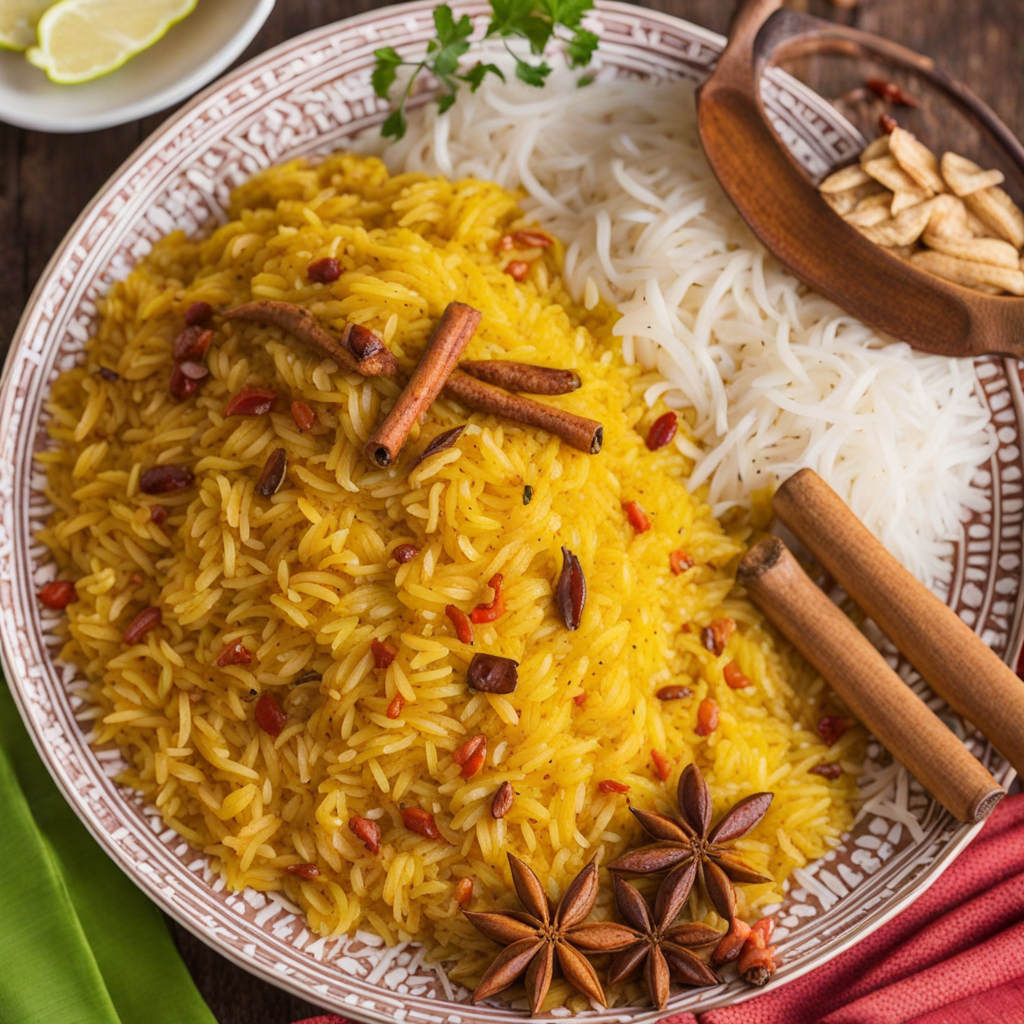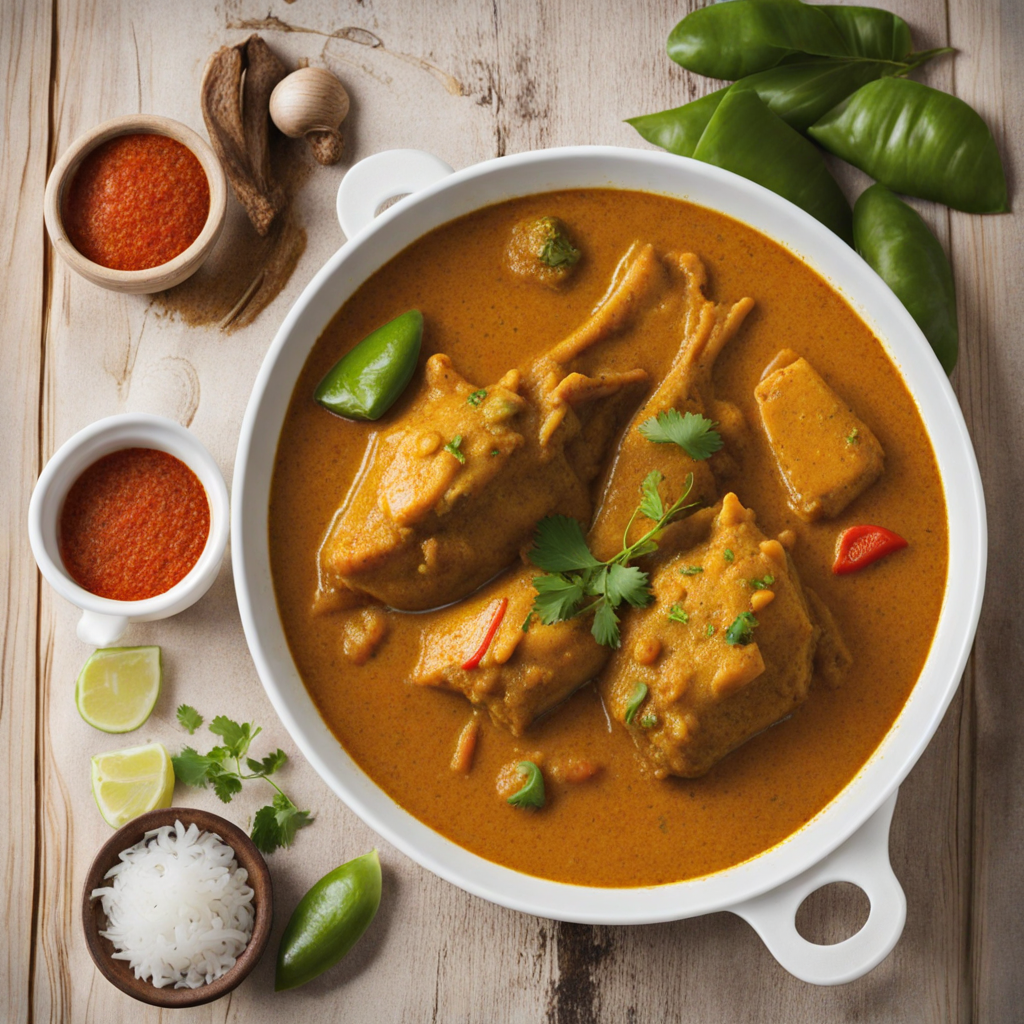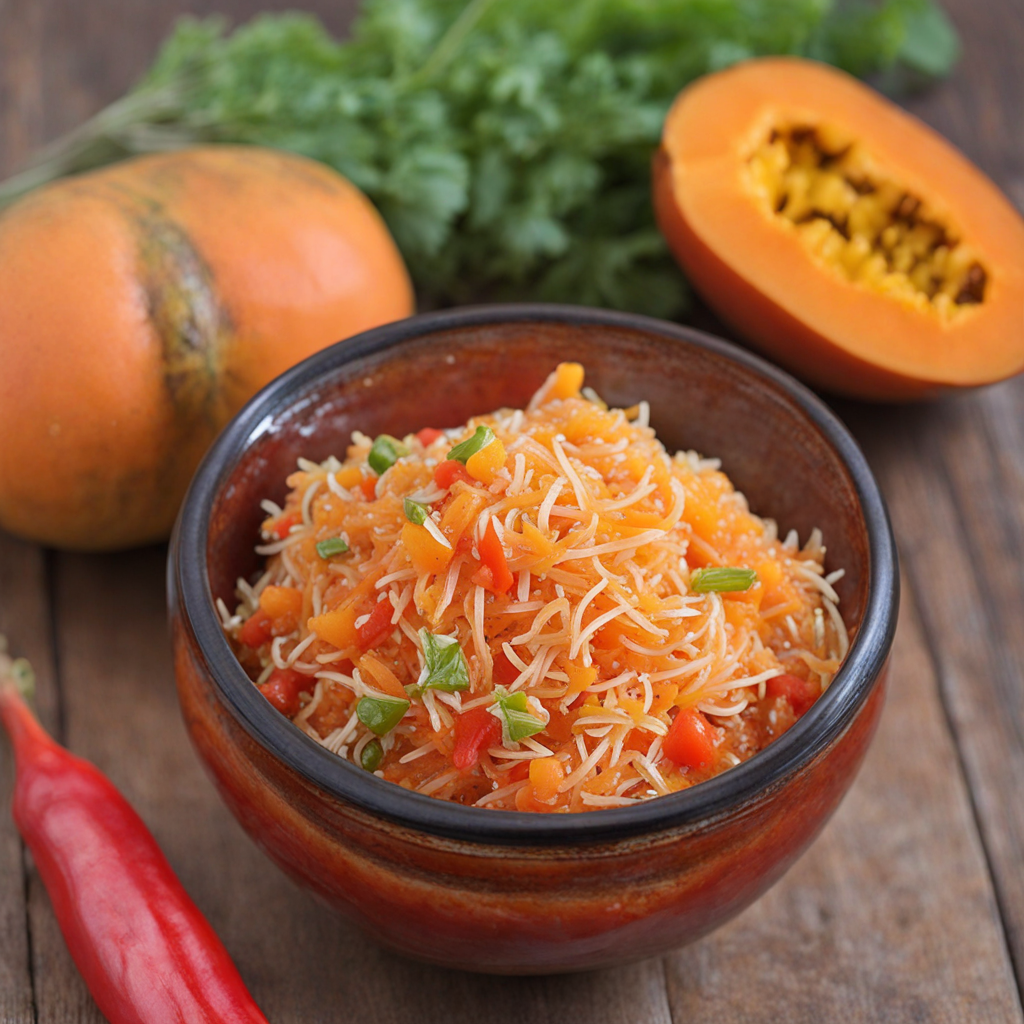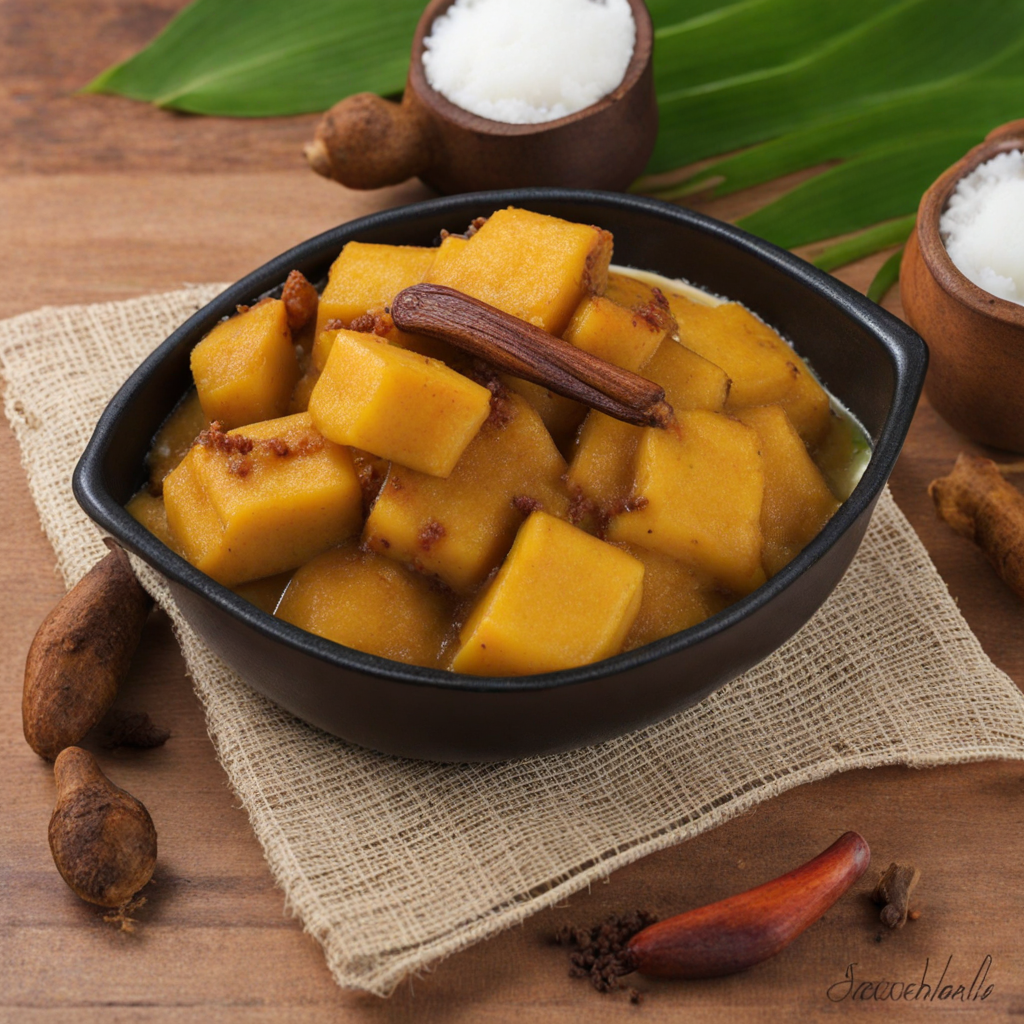Creole Rice
Creole Rice is a vibrant and aromatic dish that beautifully encapsulates the rich culinary heritage of Seychelles. This dish features fluffy, perfectly cooked rice, often infused with a medley of spices that reflect the islands' diverse influences, including African, French, and Indian cuisines. The rice is typically sautéed with ingredients such as garlic, onions, and bell peppers, which create a fragrant base that tantalizes the senses. The addition of coconut milk lends a creamy texture and a subtle sweetness, making each bite a delight. The flavor profile of Creole Rice is further enhanced by the use of local herbs and spices, like thyme, turmeric, and chili, which add depth and a gentle kick to the dish. Often, it is served alongside a variety of accompaniments, such as grilled fish or spicy stews, creating a harmonious balance of flavors. The freshness of the ingredients, often sourced from local markets, ensures that each serving is a celebration of the islands’ bounty, making it not just a meal, but an experience that transports you to the shores of Seychelles. What truly makes Creole Rice stand out is its versatility. While the traditional version is a beloved staple, it can easily be adapted to incorporate seasonal vegetables or proteins, allowing for endless variations that cater to different tastes. Whether enjoyed at a festive gathering or as a comforting home-cooked meal, Creole Rice is a testament to the vibrant culture of Seychelles, inviting all who try it to savor the rich tapestry of flavors that this beautiful archipelago has to offer.
How It Became This Dish
The History of Diri Kreol: A Culinary Journey Through Seychelles #### Origins Diri Kreol, a quintessential dish of the Seychelles, is more than just a meal; it encapsulates the archipelago's rich cultural tapestry and history. The term "Diri Kreol" translates to "Creole rice," indicative of the dish’s roots in Creole cuisine, which is a fusion of various culinary traditions brought by the diverse populations that have settled in the Seychelles over centuries. The Seychelles, a group of 115 islands in the Indian Ocean, has been shaped by its geographical location and historical interactions. Discovered by the Portuguese in the 16th century, the islands were later colonized by the French in the 18th century. This period saw the arrival of enslaved Africans, Indian laborers, and Chinese immigrants, each contributing their culinary practices and ingredients to the local food culture. Rice, a staple food in many cultures worldwide, was introduced to the Seychelles through these early settlers. The dish itself is rooted in the traditions of African, Indian, and French cooking, coming together to create a unique, flavorful base that is now synonymous with Seychellois Creole cuisine. #### Cultural Significance Diri Kreol is not just a staple food; it represents the spirit of the Seychellois people. It is often served at family gatherings, celebrations, and community events, embodying the warmth and hospitality of the Seychellois culture. The dish typically comprises rice flavored with a blend of spices, coconut milk, and sometimes vegetables or meat, creating a dish that is both comforting and festive. The preparation of Diri Kreol is often a communal activity. Family members gather in the kitchen, sharing stories and laughter while preparing the meal together. This not only strengthens family bonds but also serves as an opportunity to pass down culinary traditions from one generation to the next. The dish promotes a sense of identity among the Seychellois, reflecting their diverse heritage and shared history. #### The Ingredients Central to the preparation of Diri Kreol is rice, which is often cooked with various spices, coconut milk, and sometimes mixed with beans or lentils. The use of coconut is particularly significant, as coconuts are plentiful in the Seychelles and have become a vital ingredient in many local dishes. The richness of coconut milk adds a creamy texture and a subtle sweetness that complements the savory elements of the dish. The dish may also incorporate a variety of proteins, such as chicken, fish, or seafood, all of which are staples in Seychellois cuisine. Vegetables like carrots, bell peppers, and green beans can be added to enhance the nutritional value and color of the dish. The choice of ingredients often reflects what is available locally and seasonally, emphasizing the connection to the land and sea. #### Development Over Time As Seychelles has evolved, so too has Diri Kreol. In the early days, the dish was primarily influenced by the local agricultural practices and the availability of ingredients. However, as the islands became more integrated into global trade networks, new flavors and techniques began to seep into the local cuisine. The 20th century marked a significant period of change for Seychelles. With independence from British colonial rule in 1976, there was a resurgence of national pride, leading to a renewed interest in traditional Seychellois cuisine, including Diri Kreol. Chefs began experimenting with the dish, incorporating more local ingredients and modern culinary techniques while still respecting the traditional methods of preparation. In contemporary Seychelles, Diri Kreol is often served in restaurants and hotels catering to tourists, showcasing the islands' culinary heritage. This exposure has led to a broader appreciation for Creole cuisine, both locally and internationally. Chefs have begun to reinterpret Diri Kreol, infusing it with international flavors while still maintaining its essence. For instance, some chefs have started to use quinoa or wild rice as alternatives to white rice, catering to health-conscious diners while still honoring the dish's roots. Others have introduced fusion elements, such as using spices from Indian or Middle Eastern cuisines, creating an innovative twist on the classic dish. #### Diri Kreol Today In modern Seychelles, Diri Kreol remains a beloved staple. It is commonly served with a variety of accompaniments, such as fish curry, grilled chicken, or lentil stew, making it a versatile dish that can suit any occasion. The dish can be found in homes, street food stalls, and high-end restaurants alike, reflecting its deep-seated significance in Seychellois culture. Culinary festivals and events in Seychelles also highlight Diri Kreol, showcasing its importance in the national identity. Chefs often participate in competitions, sharing their unique takes on the dish, which fosters creativity and innovation while honoring its traditional roots. Moreover, the globalization of food culture has led to an increasing interest in Diri Kreol beyond the shores of Seychelles. Cookbooks and online platforms are now featuring Seychellois cuisine, encouraging food enthusiasts worldwide to explore the flavors of the islands. Social media has played a crucial role in this phenomenon, with food bloggers and influencers sharing their experiences with Diri Kreol, thus elevating its status on the global culinary stage. #### Conclusion Diri Kreol is much more than a dish; it is a symbol of the Seychelles' rich history and cultural diversity. From its origins rooted in the fusion of various culinary traditions to its modern interpretations, Diri Kreol continues to evolve while maintaining its significance as a beloved staple in Seychellois cuisine. As it adapts to changing tastes and global influences, Diri Kreol remains a testament to the resilience and creativity of the Seychellois people, embodying the warmth of their hospitality and the richness of their heritage. Whether enjoyed at a family gathering or a fine dining experience, Diri Kreol invites everyone to partake in the vibrant culinary tapestry that is Seychelles.
You may like
Discover local flavors from Seychelles







